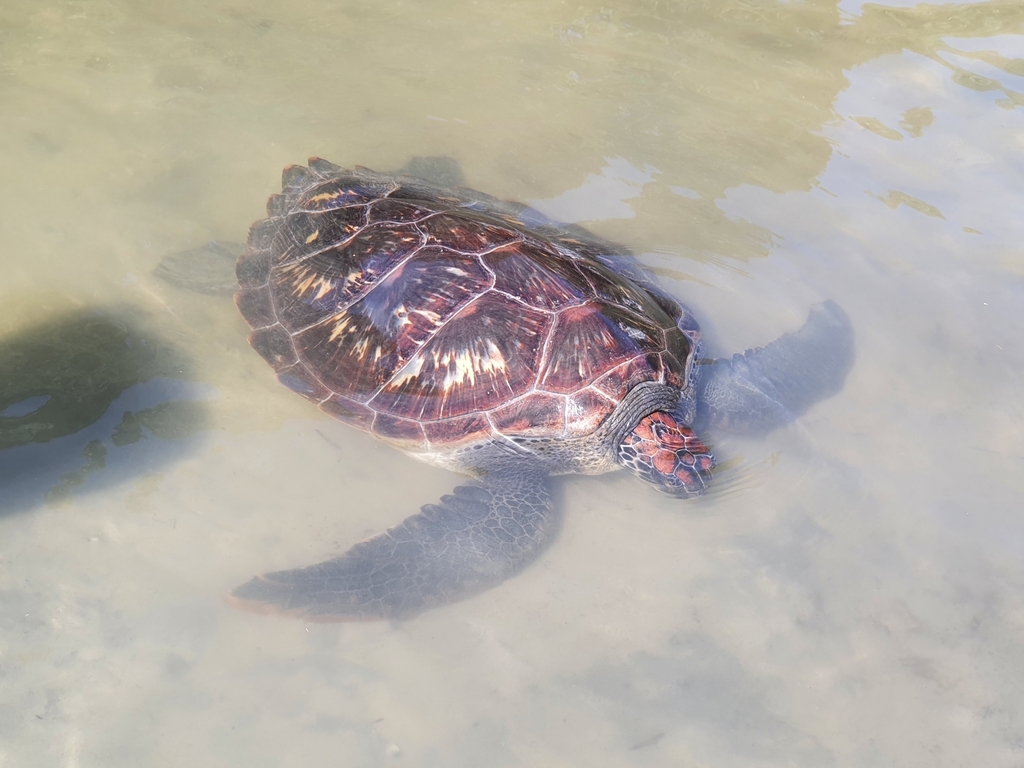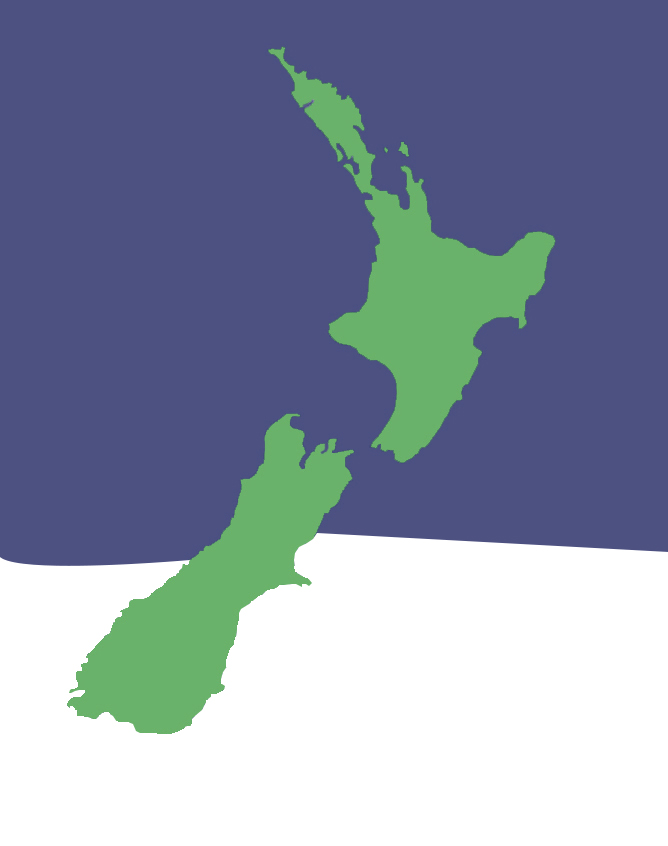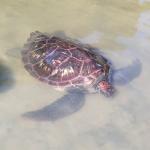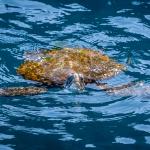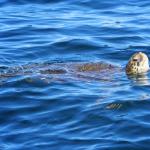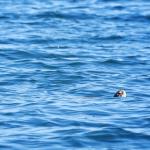- Home
- Herpetofauna Index
- Native
- Chelonia Mydas
Chelonia mydas
Green turtle
Chelonia mydas
(Linnaeus, 1758)
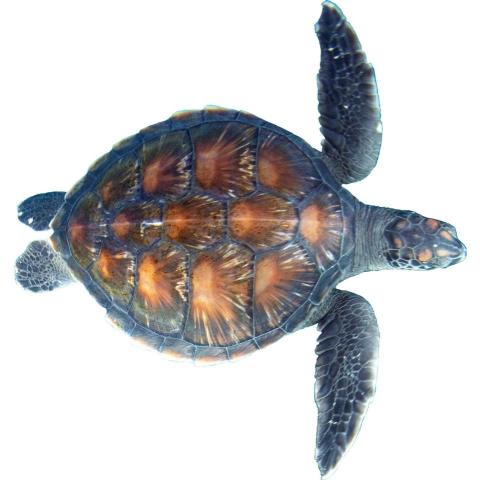
Subspecies: Pacific black sea turtle (C. mydas. ssp. agassizi)
West Pacific green sea turtle (C. mydas. ssp. japonica)
Atlantic green sea turtle (C. mydas. Ssp. mydas)
Length: up to 1.5 metres
Weight: 110-200kg (up to 300 kg)
Description
A beautiful large marine turtle, exhibiting a brown or green shell, often highlighted with a scattering of yellow and green markings. New Zealand’s green turtle population is made up primarily of juvenile and subadult animals belonging to the West Pacific population, although some individuals from Northland have been identified as the Black sea turtles of the Eastern Pacific.
Distinguished from other marine turtles by its large oval-shaped carapace (shell) which ranges in colour from olive to dark brown, and is arranged with 5 vertebral scutes (shields) running down the centre of its carapace, and 4 pairs of costal scutes (shields) arranged on either side.
Life Expectancy
80-100 years
Distribution
New Zealand is the southernmost distribution of this species in the western Pacific Ocean.
A resident sub-adult population occurs around Raoul Island in the Kermadec Archipelago.
Juveniles are fairly regularly sighted in the coastal waters of Northland, particularly around Rangaunu Harbour and the Poor Knights Islands, with records becoming sparse in the waters south of the Bay of Plenty. Few records from the South Island.
Ecology and Habitat
Green sea turtles are a marine species primarily associated with coastal habitats including seagrass meadows, saltmarshes, and reef systems.
They play a significant role in maintaining the health of seagrass beds through grazing, and, in reef systems, take part in symbiotic cleaning relationships with several fish species.
The eggs and hatchlings of marine turtles are important seasonal prey for many coastal animals and provide nutrient enrichment for coastal plant species. In addition to this, mature animals are also important prey species for several apex predators including the tiger shark (Galeocerdo cuvier).
Social Structure
Green turtles are solitary animals but are known to occur in large aggregations around natal colonies during the breeding/nesting season.
Interactions outside these periods are less common but are typically clustered around key sites such as the cleaning stations present within reef systems.
Breeding Biology
Green turtles do not breed or nest in New Zealand.
Being long-lived animals, they typically take upwards of 30 years to reach sexual maturity. Once mature, females can breed every 3-4 years (typically in late spring to early summer), producing around 80-200 eggs per nest (up to 11 nests in a season), which they dig within their natal colony.
The sex of each individual is determined by temperature, with higher temperatures resulting in females, and cooler temperatures for males. Eggs hatch approximately two months after laying.
Diet
Adults are primarily herbivorous with the majority of their diet consisting of seagrasses, algae, and seaweed. They are also known to opportunistically prey on jellyfish, crustaceans and starfish. Prior to moving into the coastal waters, which they inhabit when mature, young green turtles (< 5 years) are almost exclusively carnivorous, feeding on jellyfish, salps, and small animals in the pelagic zone.
Disease
Green turtles are susceptible to several diseases common in reptile species. However, the most concerning, and threatening of these is fibropapillomatosis; a disease only present in marine turtles. This disease is diagnosed by the formation of benign external tumours which inhibit the animal’s movement, eventually resulting in death. It is suspected that turtle leeches (Ozobranchus spp.) may be one of the major vectors.
As with other marine turtle species, human-related threats including coastal developments, harvesting of nests, chemical and plastic pollution, and bycatch by fisheries are all factors that have led to their widespread decline.
The ingestion of plastics is considered to be the most common cause of stranding in New Zealand.
Conservation Status
Listed as a non-resident native - migrant in the most recent threat classification for New Zealand reptiles, and as Endangered under the IUCN criteria.
Interesting notes
The etymology of this species is a combination of the Greek chelone meaning "turtle", and mydas in reference to the Greek king that turned all he touched into gold.
Their common name "Green turtle" does not refer to their colouration, but to their greenish fatty tissue.
References
van Winkel, D., Baling, M., Hitchmough, R. 2018. Reptiles and amphibians of New Zealand – a field guide. Auckland university press, Auckland New Zealand.

